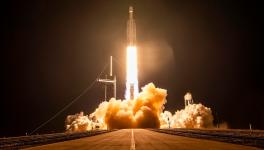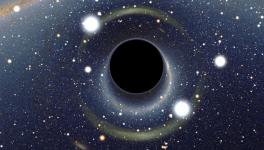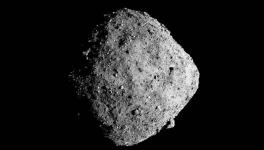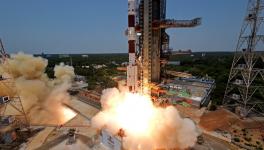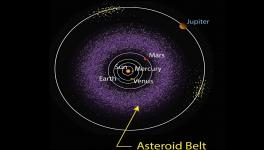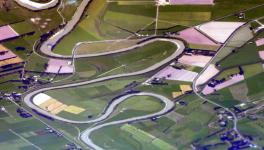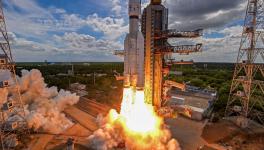Tiangong Space Station: Scientific Experiments Ranging from Dark Matter to Cancer Research Planned
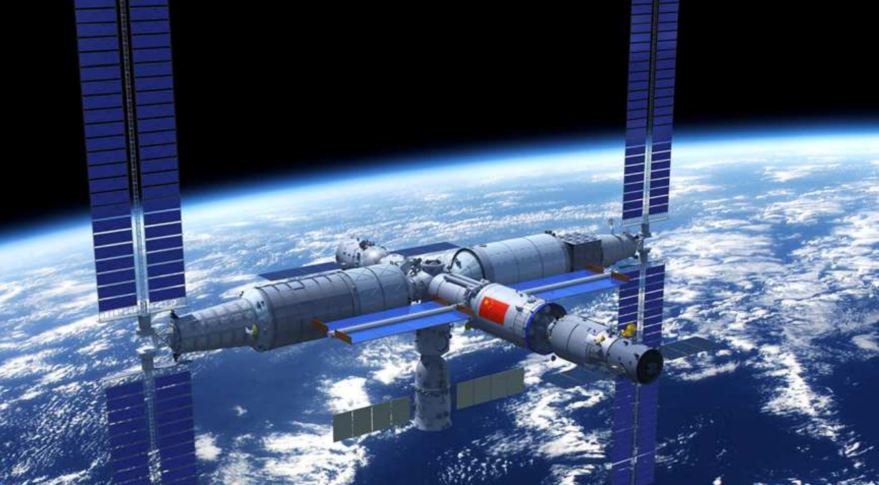
Image Courtesy: China Manned Space Engineering Office
In April this year, China successfully placed the Tiangong space station in orbit and sent up three astronauts in June who conducted the first spacewalk. Work on the Chinese space station will take some more time. It is expected to be ready in 2022. However, a long queue of experiments from around the world are already in place for flight. According to the science journal Nature, the CMSA (China Manned Space Agency) has approved a tentative plan of more than 1,000-such experiments, several of which have already been launched. The proposed research topics range from studying dark matter and gravitational waves to cancer research and studying pathogenic bacteria.
Before Tiangong was in orbit the ISS (International Space Station) was the only space laboratory in place. The addition of Tiangong has been welcomed by several scientists and researchers from across the world.
Julie Robinson, chief scientist for human exploration and operations at NASA Headquarters, said: “Increased scientific access to space is of scientific benefit globally, no matter who builds and operates platforms.”
The views of Agnieszka Pollo, an astrophysicist at the National Centre for Nuclear Research in Warsaw, were similar. “We need more space stations, because one space station is definitely not enough.” Pollo will be part of a team which will study the polarisation of γ-rays emitted from large and distant explosions on the Chinese space station.
Since its launch in 1998, the ISS provided facilities to conduct over 3,000 experiments to scientists from different countries. However, China was barred from conducting any such experiment due to a US rule which prohibits NASA from collaborating with China.
On the other hand, Tiangong is welcoming experiments from all countries, including the US. Reportedly, CMSA and the UNOOSA (United Nations Office for Outer Space Affairs) selected nine experiments to be carried out on Tiangong in June 2019. These nine experiments were in addition to a thousand other experiments that China has approved to go up to the space station, once complete. These will include 23 institutions from 17 nations.
Experiments on Tiangong:
The planned experiments on Tiangong cover a wide range of subjects. Zhang Shuang-Nan, an astrophysicist at the Chinese Academy of Sciences, is the principal investigator for a research project titled HERD (High Energy Cosmic-Radiation Detection Facility). The collaborative project involves Italy, Switzerland, Spain, Germany and is scheduled for 2027. The particle detector plans to study dark matter and cosmic rays.
Zhang and Pollo are also together in another project, the POLAR-2, which aims to study the polarisation of gamma rays emitted from large explosions. This study also plans to decipher the properties of gamma rays from such cosmic explosions; they also plan on studying gravitational waves.
Tricia Larose, a medical researcher at the University of Oslo, plans to send up experiments from the medical field. She plans to send organoids (miniature organs grown in laboratories) of healthy and cancerous tissues from the intestine, to study whether an environment with very low gravity (as in the space station) would slow or stop the growth of cancerous cells. This, she believes, may open up new cancer therapies.
Scientists from India and Mexico, on the other hand, are planning on studies involving ultraviolet ray emissions from nebulae along with infrared data from Earth to study meteorological conditions and the factors driving intense storms.
Scientists are enthusiastic about new experiments on the space station, but some raise the concern of geopolitical constraints that may pose difficulties for the experiments planned.“Norway has yet to sign a bilateral agreement with China that would give her project the green light,” Larose said.
Merlin Kole, an astrophysicist of the University of Geneva, Switzerland, is also involved in the POLAR-2 project. She said that “stricter adherence to export regulations means there is added bureaucracy around sending electronic hardware to China.”
The Tiangong space station is expected to have more than 20 experimental racks – like mini labs – in a closed, pressurised environment. There will be 67 connection points for research hardware outside in the space station, and a powerful central computing facility to process data gathered from the experiments before they are sent back to Earth.
The ISS’ life is shortening. It is expected to function till sometime between 2024 and 2028, and in such a scenario, the Chinese space station may become the only operational space station from Earth.
Get the latest reports & analysis with people's perspective on Protests, movements & deep analytical videos, discussions of the current affairs in your Telegram app. Subscribe to NewsClick's Telegram channel & get Real-Time updates on stories, as they get published on our website.









